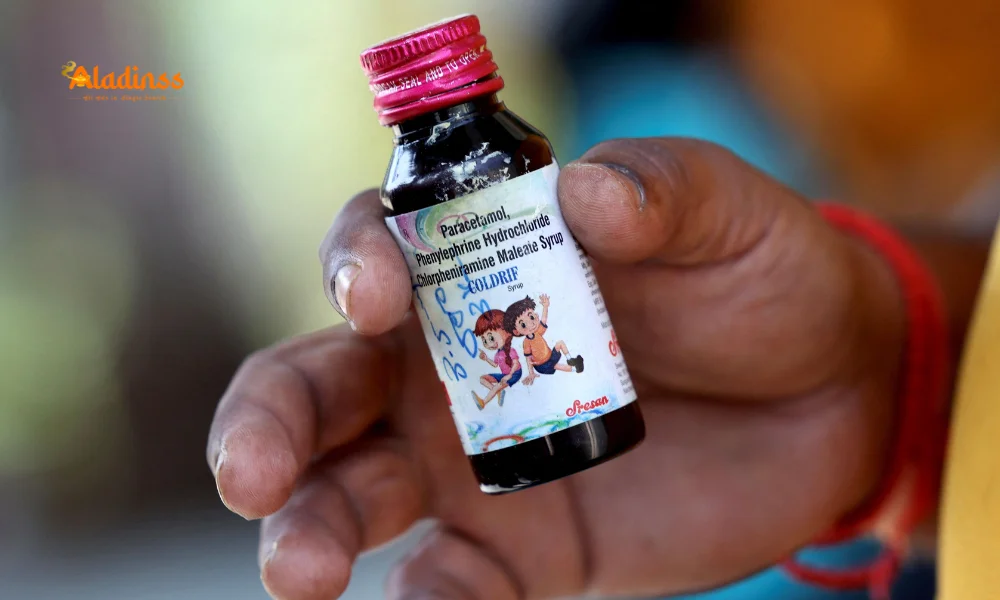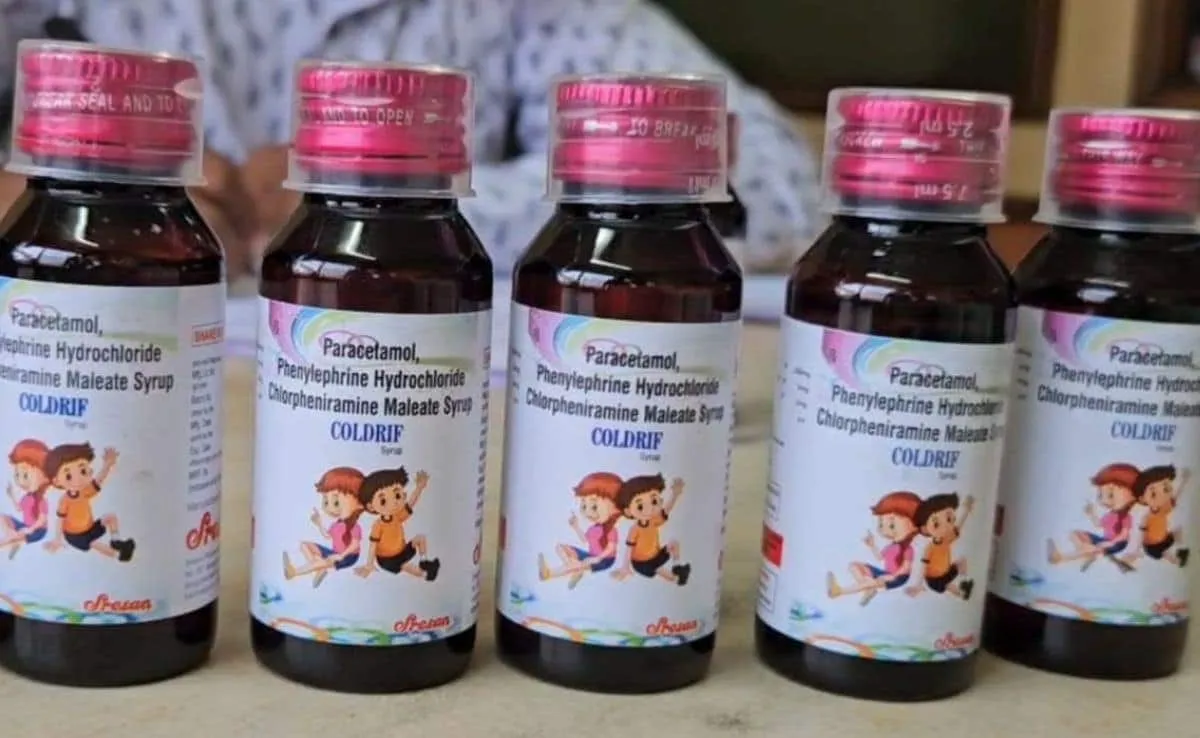India’s Bold Crackdown to Prevent Cough Syrup Deaths Gains Global Attention

India’s New Digital System to Combat Cough Syrup Contamination
In response to tragic incidents linked to contaminated cough syrups, India’s Central Drugs Standard Control Organisation (CDSCO) has introduced a groundbreaking digital monitoring system to track high-risk ingredients in pharmaceutical production. The initiative, detailed in a circular issued on October 22, 2025, mandates the use of the Online National Drug Licensing System (ONDLS) portal to ensure real-time oversight of solvent batches. This move aims to prevent further fatalities caused by toxic substances like diethylene glycol (DEG), addressing serious safety concerns in the pharmaceutical supply chain.
The cough syrup contamination crisis, particularly highlighted by recent child deaths in Madhya Pradesh, prompted this urgent action. The CDSCO’s directive requires all state and union territory drug controllers to enforce strict compliance, ensuring that manufacturers register and upload detailed batch information on the ONDLS portal. This digital system is designed to close gaps in the monitoring of high-risk solvents, enhancing the safety and traceability of pharmaceutical ingredients used in cough syrups and other liquid medications.

High-Risk Solvents Under Scrutiny
The CDSCO has identified ten high-risk solvents commonly used in cough syrups and liquid medicines, including glycerin, propylene glycol, sorbitol, maltitol, ethyl alcohol, hydrogenated starch hydrolysate, polyethylene glycol (molecular weight below 1000), and diethylene glycol stearates. These solvents, if contaminated or substituted with industrial-grade alternatives, pose severe health risks, as evidenced by past incidents of DEG contamination. The digital monitoring system aims to ensure that only pharmaceutical-grade solvents enter the supply chain.
The initiative follows a high-level meeting on October 5, 2025, chaired by the Union Health Secretary, where officials reviewed drug quality compliance and the safe use of cough syrups, particularly in pediatric formulations. The CDSCO had previously mandated mandatory testing for all cough syrup batches before manufacture and release. However, the new digital system takes oversight a step further by institutionalizing real-time tracking of solvent production and distribution.
How the ONDLS Portal Enhances Oversight
The ONDLS portal, recently upgraded by the CDSCO, serves as the backbone of the new digital monitoring system. All manufacturers of pharma-grade solvents are now required to obtain manufacturing licenses through the portal and submit real-time data for each batch produced. This includes critical details such as batch number, quantity, certificate of analysis (CoA), and information about buyers or vendors. Existing license holders must register under the portal’s “old licence management” module to ensure compliance.
State drug controllers have been instructed to verify that no batch is released to the market without complete digital submission and verification on the ONDLS portal. This end-to-end traceability aims to prevent the entry of substandard or toxic solvents into the pharmaceutical supply chain, addressing the root causes of recent contamination incidents. The CDSCO has also directed state regulators to conduct on-site inspections and training sessions to ensure manufacturers adhere to these protocols.
Background of the Cough Syrup Crisis
The urgency of the digital monitoring system stems from a series of tragic incidents involving cough syrup contamination. In recent weeks, the deaths of several children in Madhya Pradesh were linked to cough syrups containing excessive levels of diethylene glycol, a toxic substance. The World Health Organization (WHO) issued a medical alert, warning that untracked distribution through informal channels could pose significant health risks. These incidents have highlighted vulnerabilities in the pharmaceutical supply chain, particularly the use of contaminated or industrial-grade solvents.
Past contamination cases have also drawn global attention, with similar incidents reported in other countries. The CDSCO’s proactive measures aim to restore confidence in India’s pharmaceutical industry, which is a major global supplier of generic medicines. By implementing stringent oversight through the ONDLS portal, the regulator seeks to prevent future tragedies and ensure the safety of cough syrups, especially for vulnerable populations like children.
Strengthening Regulatory Compliance
The CDSCO’s directive emphasizes collaboration between state drug controllers and zonal offices to enforce compliance. Manufacturers are being sensitized through circulars, inspections, and training programs to ensure seamless adoption of the digital system. The regulator has underscored the importance of strict adherence to the new protocols, warning that non-compliance could result in penalties or suspension of manufacturing licenses.
The inclusion of ten high-risk solvents in the monitoring framework reflects a comprehensive approach to addressing supply chain vulnerabilities. By categorizing these solvents as high-risk, the CDSCO aims to prioritize oversight of ingredients with a history of contamination risks. This move is expected to enhance the overall quality of pharmaceutical products, particularly cough syrups, which are widely used across India and exported globally.
Impact on Public Health and Industry
The introduction of the digital monitoring system is a significant step toward safeguarding public health. By ensuring end-to-end traceability of high-risk solvents, the CDSCO aims to eliminate the use of substandard materials in pharmaceutical production. This is particularly critical for pediatric formulations, where even minor contamination can have devastating consequences.
For the pharmaceutical industry, the new system introduces additional compliance requirements but also enhances credibility. India’s reputation as a reliable supplier of affordable medicines has been challenged by past contamination incidents. The ONDLS portal, by providing real-time oversight, could help restore trust among global regulators and consumers, ensuring that Indian-made cough syrups meet stringent safety standards.
Challenges and Future Steps
While the digital monitoring system is a promising initiative, its success depends on effective implementation. Manufacturers, particularly smaller firms, may face challenges in adapting to the ONDLS portal’s requirements, including the need for digital infrastructure and trained personnel. The CDSCO’s emphasis on training and inspections aims to address these hurdles, but sustained support will be crucial for widespread compliance.
Looking ahead, the CDSCO may expand the monitoring system to include additional high-risk ingredients or pharmaceutical products. The regulator’s proactive approach signals a broader commitment to strengthening India’s drug regulatory framework, aligning with global standards. As the system rolls out, its impact on preventing cough syrup contamination and ensuring public safety will be closely watched by stakeholders worldwide.
Comment / Reply From
No comments yet. Be the first to comment!











